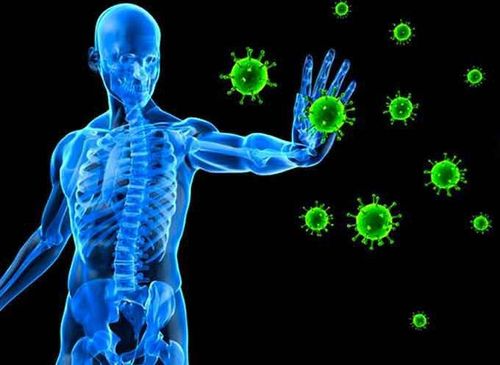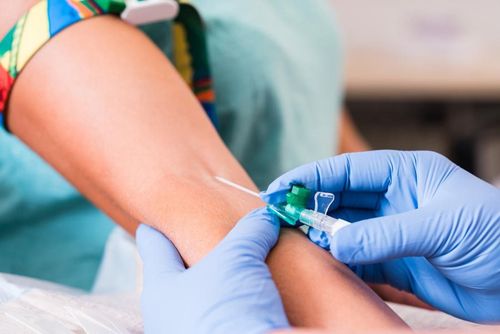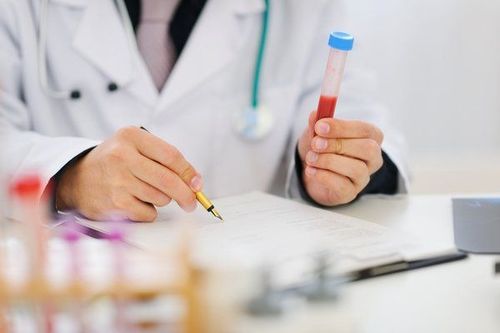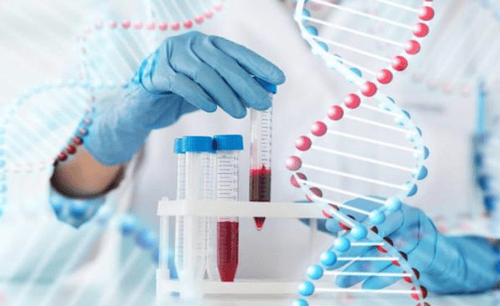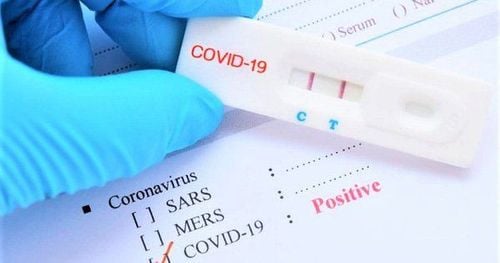This is an automatically translated article.
The article was professionally consulted with Master, Doctor Nguyen Thi Nhat - Infectious Diseases Doctor - Department of Medical Examination & Internal Medicine - Vinmec Hai Phong International General Hospital.You have a question about a PCR test with a CT index. So what does the CT number in a PCR test mean? How much CT is the quick test negative and to determine if a person is positive for Covid-19 or not. Is it related to your viral load or how sick you are? The answer will be in the article below.
1. What are PCR and RT-PCR tests?
The coronavirus pandemic is rapidly increasing worldwide, and COVID-19 infections are increasing globally. As a result, understanding and discussion of the increasing number of medical terms used to detect COVID-19 such as RT-PCR test, TruNat test, antigen test, test rapid antibody and other terms. According to regulatory agencies such as FDA, Food and Agriculture Organization of the United Nations (FAO), RT-PCR is one of the most accurate laboratory testing methods for the current coronavirus pandemic. In addition, there are other tests that are also used to detect the presence of the virus in an individual.Real-time RT-PCR stands for Real-Time Reverse Transcription - Polymerase Chain. The reaction allows for the detection and presence of specific genetic material in pathogens including viruses or bacteria. COVID-19 real-time reverse transcriptase polymerase chain reaction (RT-PCR) examination of upper and lower respiratory tract specimens such as swabs, sputum, nasopharyngeal and other samples of patients suspected of COVID-19 . An individual's nose or throat swabs were collected by trained health-care personnel with a collection kit approved by the World Health Organization (WHO) and licensed for circulation by the Department of Health.
This test involves extraction of ribonucleic acid (RNA), a genetic material of the COVID-19 virus. The test analyzes genetic sequences such as the SARS-COV-2 virus and then the result is positive. The test result is negative when the sample being analyzed does not contain the virus or the sample is not properly administered. RT-PCR testing is quite expensive and requires well-trained test technicians, RNA extraction machines, and a qualified laboratory. A minimum of 4 hours is required for RT-PCR test results and assessment of infection in an individual.
According to medical experts, the RT-PCR test is more accurate than other tests such as antigen and antibody tests. When the test analyzes genetic sequences such as the SARS-COV-2 virus and then determines the results. However, RT-PCR test results are not completely accurate or perfect. Given the large sample size, the test may detect some patients as false negatives due to laboratory error or insufficient sample size from the patient.
Also, another problem with these tests can be faulty reagents. Suppliers work against strict guidelines to maintain the quality of reagents and kits. Therefore, if a patient's RT-PCR test results are negative but still have some symptoms of the virus, medical professionals can do a CT scan to confirm.
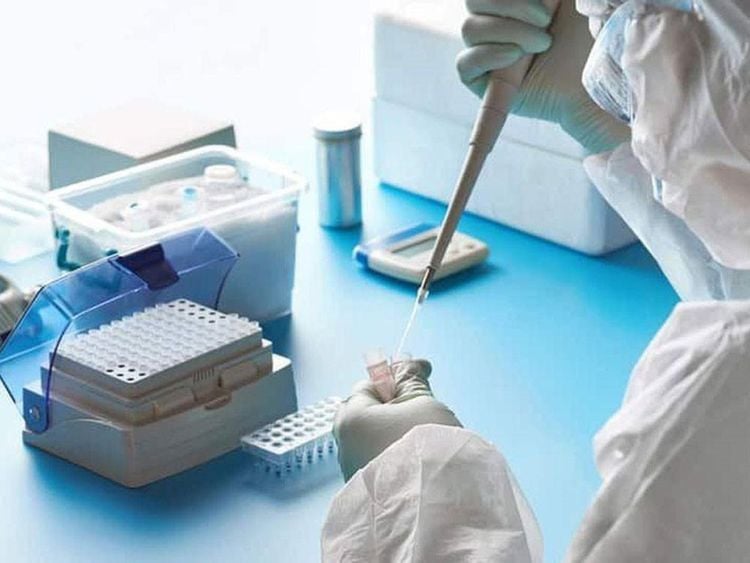
2. What is the CT index in a PCR test?
Scientifically, the CT value signals the number of cycles the sample must go through to amplify and bring the viral DNA to a traceable level in certain settings. In terms of diagnostics, a COVID report always refers to the number of CTs, which helps the suspect patient to know how many cycles it takes to detect the DNA of the SARS-COV-2 virus. Amounts are determined when samples are collected from patients, RNA is extracted, and then treated with reverse transcriptase enzymes. A portion of the DNA is also extracted, which is then amplified using polymerase chain reaction to make copies. The DNA is then analyzed and measured under clinical settings and using specific dyes, which then help to collect and estimate the CT value in a given sample. The more RNA there is in the patient sample, the fewer cycles it takes for the signal to reach the detection threshold (low CT value). The less RNA present in the clinical sample, the more cycles are required. Therefore, a low CT value corresponds to a high viral load, while a high CT value corresponds to a low viral load.The CT value is the cut-off for a positive test. It ensures that the PCR test correctly detects the presence of the virus and is not a false signal. In some cases, such as in patients with compromised immune systems, samples may need to be retested after recovering from COVID-19. CT values can be used to track changes in the amount of virus present in a person's sample over time.
2.1. What is the CT value, the rapid test is negative and infectious It is not possible to directly convert CT values into the degree or duration of infection.
A person is considered infectious if they release intact virus particles and can continue to infect others. PCR tests cannot distinguish viral genetic material from intact viral particles in infected individuals or viral particles present in recovered individuals.
There is good evidence that when more than 35 cycles are required for virus detection, virus concentrations are so low that it is unlikely to grow viruses in the laboratory. However, the cells used in the lab to grow the virus are different from those in the back of the throat and nose (nasopharynx) or lungs in humans. So just because the virus can't be detected in a lab doesn't mean it won't be transmissible.
Many people believe that with a low viral RNA copy number (high CT value), the virus will not be able to transmit. A recent study that followed symptomatic patients who did not require hospitalization found that those with higher viral loads (lower CT) were infected at a higher rate than those who were in direct contact with them. But it's not yet known exactly how much virus it actually takes to infect someone, and there are other important factors that can affect the likelihood of infection, including the health of the exposed person. and the type of exposure that has occurred.
However, according to globally introduced medical guidelines:
A CT value below 35 means a person is positive for COVID A CT value of 35 or more qualifies as a negative report. In Vietnam, the Ministry of Health has guidelines related to home isolation of F0 based on CT values. F0 cases have RT-PCR tests, if the test results are negative, they will be transferred to home isolation according to regulations. In addition, positive cases but with low viral load (CT value > 30) can also be monitored and treated at home because these cases have a very low chance of infecting others.

* The CT score in a PCR test will depend on the stage of infection
Between exposure to the virus and the onset of symptoms ( eg, incubation period or pre-symptomatic), the amount of virus in a person's sample may initially be too low to be detectable (negative). A person with a negative initial result can be tested with a high CT value i.e. >35 (low viral load), followed by a lower CT value (sudden increase in viral load) during some days. Laboratories around the country have seen many cases tested early in their infection, and the initial sample had a very high CT value of ~35 (low viral RNA concentration) and today approximately 14 after CT (high viral RNA).
* The CT index in the PCR test is affected by the type of sample taken from the person
Nasal swabs (a swab that goes deep into the nose to pick the back of the upper throat) is the most sensitive specimen for humans . Throat/nose swabs and mouthwash/saliva may not contain as much virus (so they will test positive with higher CT values). In people with whom COVID-19 has infected their lungs, these samples from the nose/throat may be negative and deeper sampling such as sputum is needed to detect the virus. In addition, the type of swab used to collect the sample can also affect the CT value.
* The CT index in a PCR test is affected by the quality of the specimen
The quality of the specimen collected is very important. If you don't get the best possible sample, there will be less virus and this can lead to an artificially high CT value sample in someone who may have a lot of virus in their system.
* The CT score in a PCR test cannot be compared between different PCR tests
There are no standards by which one test can be compared with another, so the CT ranges may vary a lot depending on the type of test used. Different signal detection methods can be used. In fact, even when examining identical samples with different PCR tests, the results can differ by up to 8 CT values (e.g. Between 22 and 30) that have been approved by Canadian health authorities. in many different states.
* Traces of the virus can be collected long after the virus is no longer infectious
PCR can be positive for more than 100 days or more after infection, often with valid tests CT is high but in most cases is not contagious to others after 10 days of symptom onset. This finding has been reviewed in Infection Prevention and Control (IPAC) practice and public health recommendations for patient isolation. This recommendation is based on symptom onset, disease severity, and the presence of any underlying immunosuppression rather than on PCR results in both some health care settings and other health care settings. health and more in a community setting.
* CT readings on other tests
CT counts can also be performed via chest computed tomography for COVID patients who may receive a negative RT-PCR/RAT report (i.e. no detectable). present sufficient viral loads in the nasal and pharyngeal samples) but a sizable viral load remains in the lungs and chest. However, it should be remembered that the CT value in a chest computed tomography represents a different value. In chest computed tomography, the higher the CT value, the higher the severity of the infection. This is also called the CT score and is different from the CT value found through PCR tests.
Please dial HOTLINE for more information or register for an appointment HERE. Download MyVinmec app to make appointments faster and to manage your bookings easily.





